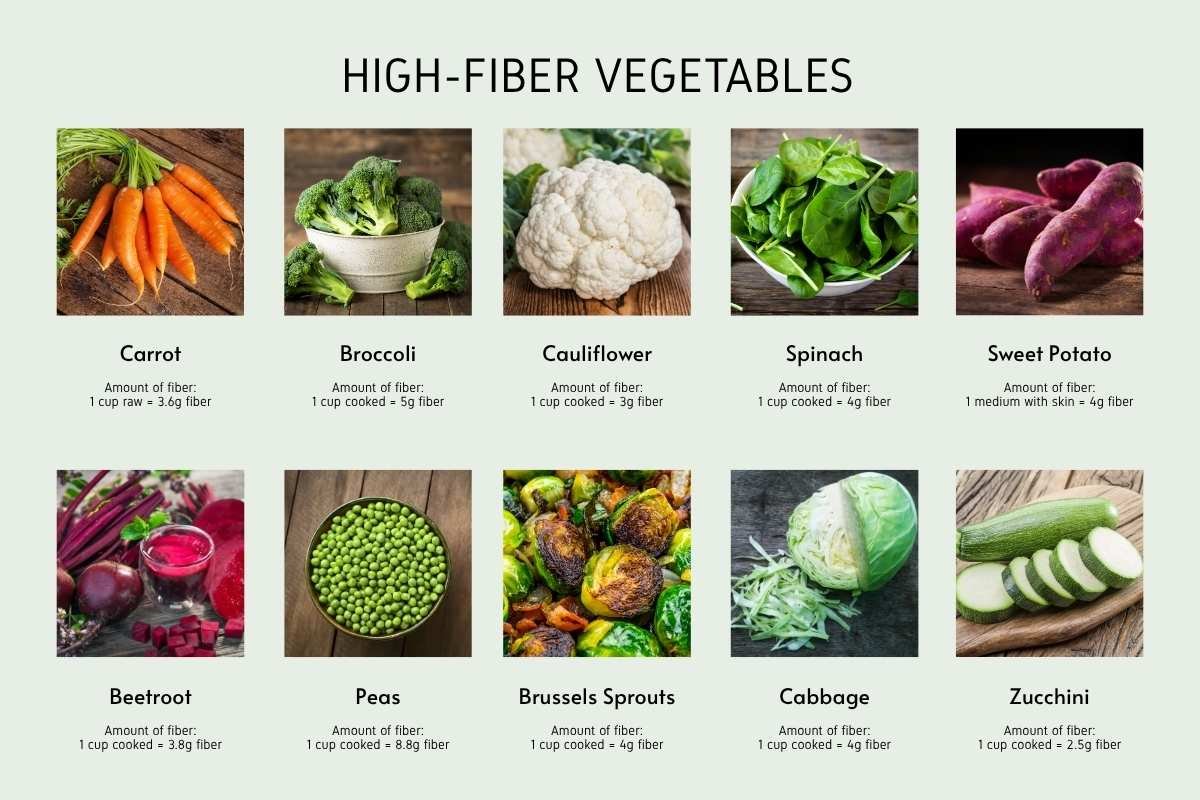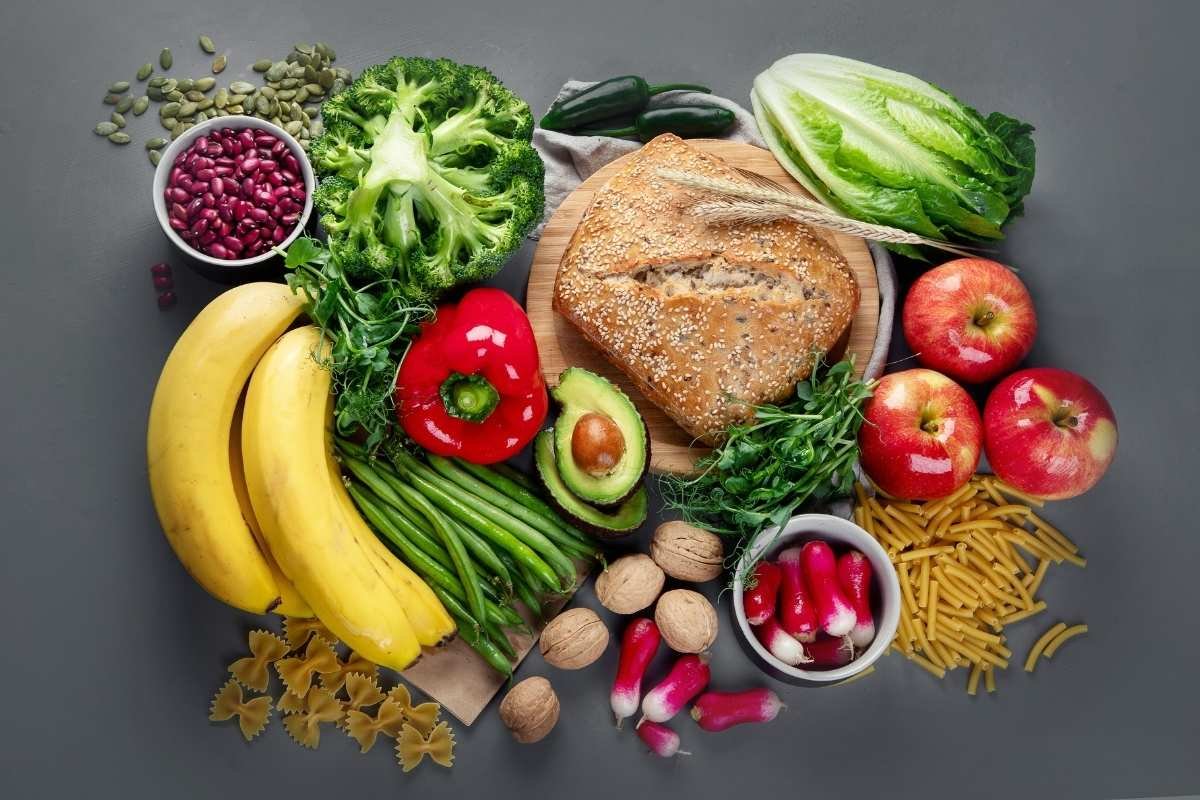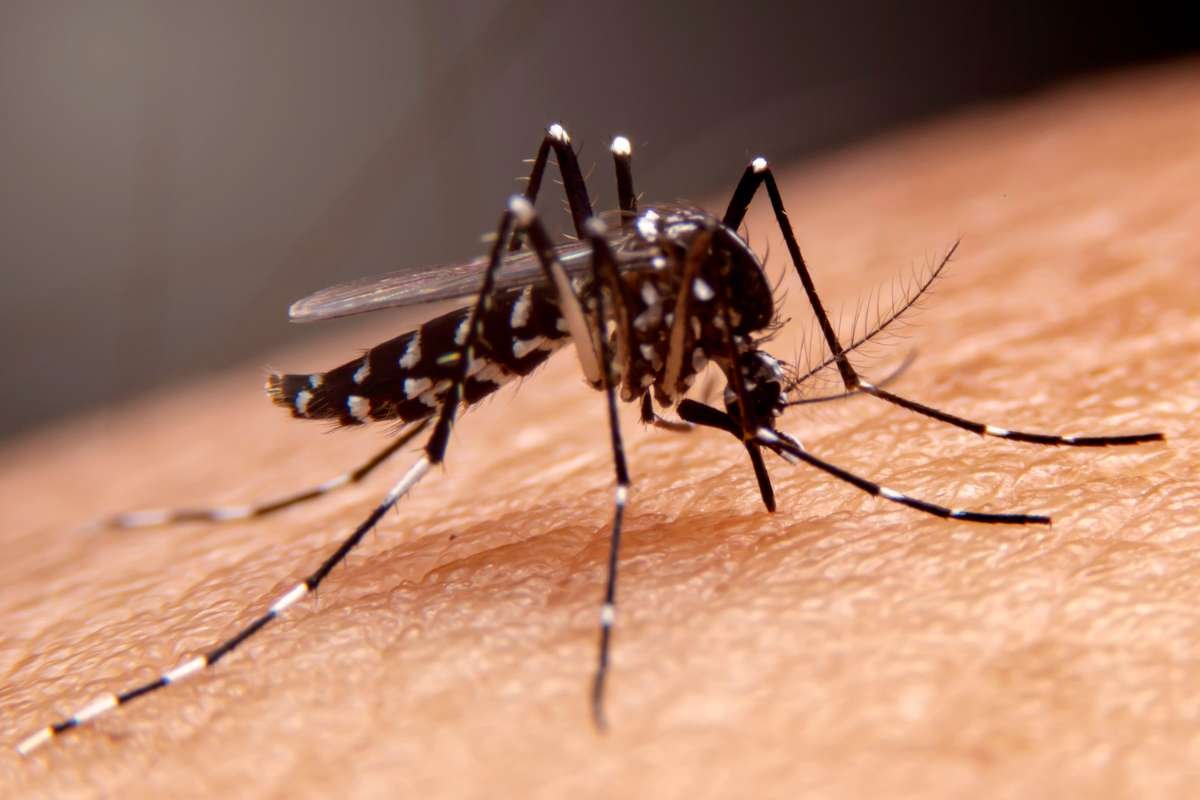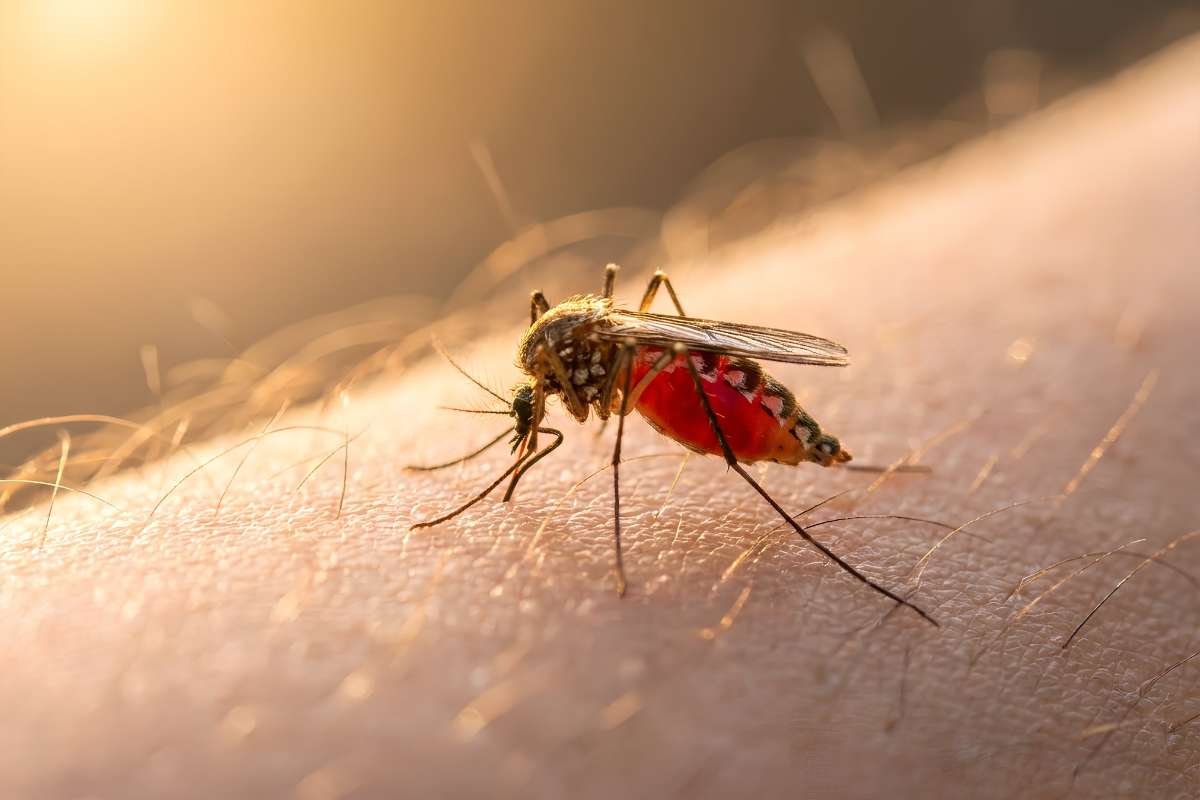“Let food be thy medicine and medicine be thy food.” – Hippocrates
Your body needs fiber more than it needs another trendy smoothie or supplement. High-fiber foods are like the unsung heroes of health. They don’t just keep things moving; they keep your gut grinning, your heart pumping strong, and your brain firing on all cylinders. Imagine ditching the daily bloat, trimming your waistline, and staying full of energy, all just by eating smarter. It’s not about going fancy, it’s about going fibrous. Say goodbye to sluggish days and hello to smooth digestion, glowing skin, and happier moods. So grab your fork, fiber isn’t just fuel, it’s freedom.
What are High-Fiber Foods?
High-Fiber Foods are foods rich in dietary fiber, a plant-based nutrient that isn’t digested by your body. Instead, it passes through your digestive system, helping clean it out, regulate sugar levels, and keep you full longer.
Fiber comes in two types:
- Soluble fiber dissolves in water and slows digestion (good for lowering cholesterol and glucose).
- Insoluble fiber adds bulk to stool and supports regular bowel movements.
High-Fiber Foods include fruits, vegetables, legumes, whole grains, seeds, and nuts. They not only support digestion but also fight diseases and help with weight control.
Understanding Fiber in Your Diet
Your body can’t break down fiber. Instead, fiber passes through your stomach, small intestine, and colon relatively intact. This is exactly why High-Fiber Foods are so effective in aiding digestion, controlling blood sugar, and lowering cholesterol.
- Soluble fiber becomes gel-like and slows down digestion. Found in oats, apples, and beans.
- Insoluble fiber stays whole and adds bulk to your stool. Found in whole wheat, carrots, and cauliflower.
You need both for a balanced diet. Most people, however, don’t get enough, making High-Fiber Foods a must-add to daily meals.
How Much High-Fiber Food Do You Need?
| Age Group | Gender | Approx. Daily Fiber |
| Children (1-3) | All | 19 Gram |
| Children (4-8) | All | 25 Gram |
| Teens (9-13) | Boys | 31 Gram |
| Teens (9-13) | Girls | 26 Gram |
| Teens (14-18) | Boys | 38 Gram |
| Teens (14-18) | Girls | 26 Gram |
| Adults (19-50) | Men | 38 Gram |
| Adults (19-50) | Women | 25 Gram |
| Adults (51+) | Men | 30 Gram |
| Adults (51+) | Women | 21 Gram |
Which Foods Are High-Fiber Foods?
FRUITS:

1. Raspberries
Tiny but mighty, raspberries are full of juicy flavor and tiny seeds that help your digestion stay on track. They are antioxidant-rich and naturally low in sugar.
- Amount of fiber: 1 cup = 8g fiber
- How to eat them: Stir into yogurt, toss on top of cereal, or blend into smoothies.
2. Pear (with skin)
Don’t peel this fruit, its skin is loaded with fiber and antioxidants. Pears are juicy, filling, and help regulate blood sugar.
- Amount of fiber: 1 medium pear = 5.5g fiber
- How to eat them: Eat raw with the skin, slice into salads, or pair with cheese for a snack.
3. Apple (with skin)
Crisp, sweet, and satisfying, apples are a go-to snack. Their pectin content (a type of soluble fiber) supports digestion and heart health.
- Amount of fiber: 1 medium apple = 4.4g fiber
- How to eat them: Snack on whole or chop into oats, nut butter toast, or salads.
4. Banana
Bananas are gut-friendly fruits rich in resistant starch (especially when green), helping your gut bacteria thrive.
- Amount of fiber: 1 medium banana = 3.1g fiber
- How to eat them: Add to breakfast bowls, blend into smoothies, or eat on the go.
5. Guava
This tropical fruit is loaded with vitamin C and fiber, especially in its edible seeds. It helps support immunity and digestion.
- Amount of fiber: 1 medium guava = 3g fiber
- How to eat them: Slice and eat raw with a pinch of salt, or blend into juice (unstrained).
6. Orange
Whole oranges offer more than vitamin C; they provide juicy pulp and pith that support healthy digestion.
- Amount of fiber: 1 medium orange = 3g fiber
- How to eat them: Peel and eat as-is or add segments to salads and parfaits.
7. Avocado
This creamy fruit is both fiber-rich and full of healthy fats, helping you stay full longer and lowering cholesterol.
- Amount of fiber: 1 avocado = 10g fiber
- How to eat them: Spread on toast, mash into guacamole, or slice into grain bowls.
8. Kiwi
Kiwis are bright green with a unique sweet-tart flavor. Their skin is edible too, and adds a bit more roughage.
- Amount of fiber: 1 medium kiwi = 2g fiber
- How to eat them: Eat whole or slice into salads, yogurt bowls, or smoothies.
9. Papaya
Papaya contains digestive enzymes and soft fiber, making it ideal for those with tummy troubles or sluggish digestion.
- Amount of fiber: 1 cup = 2.5g fiber
- How to eat them: Eat fresh with lemon, cube into a fruit salad, or blend into a smoothie.
10. Mango
Sweet, juicy mangoes aren’t just a treat; they also bring mild fiber benefits along with vitamins A and C.
- Amount of fiber: 1 cup = 2.6g fiber
- How to eat them: Enjoy fresh, make smoothies, or combine with yogurt and mint.
VEGETABLES:

11. Carrot
Carrots are crunchy, mildly sweet, and full of beta-carotene and fiber. They’re ideal for snacking or adding bulk to meals.
- Amount of fiber: 1 cup raw = 3.6g fiber
- How to eat them: Eat raw as sticks, roast with herbs, or shred into salad.
12. Broccoli
This cruciferous veggie is a superstar for gut and immune health, thanks to its mix of soluble and insoluble fiber.
- Amount of fiber: 1 cup cooked = 5g fiber
- How to eat them: Steam, roast, or toss into pasta and stir-fries.
13. Cauliflower
Cauliflower is versatile and fiber-rich, helping you feel full without adding many calories. It supports blood sugar balance.
- Amount of fiber: 1 cup cooked = 3g fiber
- How to eat them: Roast florets, mash like potatoes, or use as a rice substitute.
14. Spinach
Leafy and rich in iron, spinach has a decent fiber punch when cooked or eaten raw. It’s a great veggie for overall wellness.
- Amount of fiber: 1 cup cooked = 4g fiber
- How to eat them: Add to smoothies, sauté with garlic, or mix into salads.
15. Sweet Potato (with skin)
The skin of sweet potato is where most of the fiber hides, along with potassium and vitamin A.
- Amount of fiber: 1 medium with skin = 4g fiber
- How to eat them: Bake whole, mash with the skin on, or cube into curries.
16. Beetroot
Beets boost blood flow and are high in fiber, which supports detox and digestion. They also add color to meals.
- Amount of fiber: 1 cup cooked = 3.8g fiber
- How to eat them: Roast, boil, juice with ginger, or slice into salads.
17. Peas
Sweet green peas are small but mighty, rich in fiber, protein, and iron.
- Amount of fiber: 1 cup cooked = 8.8g fiber
- How to eat them: Add to pulao, pasta, or blend into soups and gravies.
18. Brussels Sprouts
These mini cabbages pack a serious fiber punch and support heart health and digestion.
- Amount of fiber: 1 cup cooked = 4g fiber
- How to eat them: Roast until crispy, steam lightly, or shred into slaw.
19. Cabbage
Cabbage is low in calories and high in fiber. It’s great for digestion and can be eaten raw or cooked.
- Amount of fiber: 1 cup cooked = 4g fiber
- How to eat them: Add to stir-fries, soups, or ferment into sauerkraut.
20. Zucchini
Mild and watery, zucchini adds volume to meals with some fiber to help digestion.
- Amount of fiber: 1 cup cooked = 2.5g fiber
- How to eat them: Grill slices, spiral into noodles, or sauté with olive oil.
WHOLE GRAINS:

21. Oats
Oats are one of the best sources of soluble fiber, especially beta-glucan, which helps lower cholesterol and improve fullness.
- Amount of fiber: 1 cup cooked = 4g fiber
- How to eat them: Make oatmeal, overnight oats, or blend into smoothies.
22. Brown Rice
Brown rice keeps its bran and germ, giving it more fiber and nutrients than white rice.
- Amount of fiber: 1 cup cooked = 3.5g fiber
- How to eat them: Serve with dal, stir-fry, or mix into veggie bowls.
23. Barley
Barley is chewy and rich in beta-glucan, a fiber that regulates cholesterol and blood sugar.
- Amount of fiber: 1 cup cooked = 6g fiber
- How to eat them: Add to soups, salads, or replace rice in meals.
24. Quinoa
This grain-like seed is gluten-free, protein-rich, and great for fiber intake. It’s light and fluffy once cooked.
- Amount of fiber: 1 cup cooked = 5g fiber
- How to eat them: Toss into salads, make bowls, or use as stuffing.
25. Millet
An ancient grain, millet is rich in fiber, iron, and magnesium. It supports digestion and heart health.
- Amount of fiber: 1 cup cooked = 2.3g fiber
- How to eat them: Cook them into porridge, use them in upma, or make millet roti.
26. Buckwheat
Despite its name, buckwheat is gluten-free and high in fiber and antioxidants.
- Amount of fiber: 1 cup cooked = 4.5g fiber
- How to eat them: Cook as a grain or grind into flour for pancakes.
27. Whole Wheat Bread
True whole wheat bread contains fiber from bran and keeps you full longer than white bread.
- Amount of fiber: 2 slices = 6g fiber
- How to eat them: Use for sandwiches, toast, or homemade croutons.
28. Whole Grain Pasta
This pasta retains its wheat germ and bran, offering more fiber and nutrients than refined versions.
- Amount of fiber: 1 cup cooked = 4g fiber
- How to eat them: Pair with veggies and olive oil or tomato-based sauce.
29. Popcorn (air-popped)
Popcorn is a whole grain snack with surprising fiber content when made without butter and oil.
- Amount of fiber: 3 cups = 3.5g fiber
- How to eat them: Air-pop and sprinkle with salt or herbs.
30. Rye
Rye has a unique taste and high fiber content, making it a hearty grain for bread and crackers.
- Amount of fiber: 1 slice = 2g fiber
- How to eat them: Try rye toast or rye crackers with hummus.
Legumes and Pulses:

31. Lentils
Legumes are a great source of fiber. Lentils are low in fat, rich in protein, and incredibly filling. They come in many varieties, like red, green, and brown, each with its own flavor and texture. They’re a common ingredient in many world cuisines.
- Amount of fiber: 1 cup, boiled = 15.6 g
- How to eat them: Use in Indian dals, hearty soups, or chilled in lentil salads. They also work well in veggie burgers or as a meat replacement in chili.
32. Chickpeas
Also known as garbanzo beans, chickpeas are high in fiber and protein. They are a Mediterranean favorite and have a mild, nutty taste that blends well in many dishes.
- Amount of fiber: 1 cup, boiled = 12.5 g
- How to eat them: Mash into hummus, roast as a snack, or toss into salads and curries.
33. Kidney Beans
These dark red beans are fiber-rich and great for digestion. They’re sturdy, slightly sweet, and absorb flavors well, making them popular in hearty meals.
- Amount of fiber: 1 cup, boiled = 11.3 g
- How to eat them: Use in rajma curry, chili, rice bowls, or mixed salads.
34. Black Beans
These shiny black legumes are packed with fiber and plant-based protein. They also provide essential minerals like magnesium and iron.
- Amount of fiber: 1 cup, boiled = 15 g
- How to eat them: Add to burritos, rice bowls, soups, or smash into veggie patties.
35. Split Peas
Split peas are high in soluble fiber, which helps lower cholesterol. They’re commonly used in thick soups and stews.
- Amount of fiber: 1 cup, boiled = 16.3 g
- How to eat them: Make split pea soup or mash them into a savory dal.
36. Edamame
Young green soybeans, or edamame, are rich in both fiber and protein. They’re tender, slightly sweet, and full of antioxidants.
- Amount of fiber: 1 cup, boiled = 8 g
- How to eat them: Snack on boiled edamame with sea salt or add to stir-fries and noodle bowls.
37. Pinto Beans
These speckled beans are creamy and delicious. They’re a staple in Mexican cooking and help support digestive health thanks to their high fiber content.
- Amount of fiber: 1 cup, boiled = 15 g
- How to eat them: Use them in refried beans, burritos, or soups.
38. Green Gram (Moong)
Green gram, also called moong beans, is light, easy to digest, and rich in fiber. They’re widely used in Indian dishes.
- Amount of fiber: 1 cup, boiled = 15.4 g
- How to eat them: Use them in khichdi, sprout them for salads, or cook them into moong dal.
39. Navy Beans
Navy beans are small, white legumes known for their creamy texture. They pack a fiber punch and are great in low-fat diets.
- Amount of fiber: 1 cup, boiled = 19.1 g
- How to eat them: Add to soups, stews, or mash for dips.
40. Lima Beans
Lima beans are buttery and soft with a mild taste. They’re rich in fiber and a good source of iron and magnesium.
- Amount of fiber: 1 cup, boiled = 13.2 g
- How to eat them: Use in stews, curries, or sauté with garlic and olive oil.
Nuts:

41. Almonds
Almonds are a crunchy, fiber-rich nut that’s also packed with healthy fats, vitamin E, and protein.
- Amount of fiber: 28g (about 23 almonds) = 3.5 g
- How to eat them: Snack on raw or roasted almonds, add to salads or oatmeal, or grind into almond butter.
42. Walnuts
These brain-shaped nuts are high in fiber and omega-3 fatty acids, supporting heart and brain health.
- Amount of fiber: 28g (about 14 halves) = 2 g
- How to eat them: Add to baked goods, yogurt, or enjoy as a crunchy snack.
43. Pistachios
Pistachios are slightly sweet and vibrant green. They’re fiber-rich and help support healthy cholesterol levels.
- Amount of fiber: 28g (about 49 nuts) = 3 g
- How to eat them: Eat plain, add to desserts, or sprinkle over salads.
Seeds:
44. Chia Seeds
Chia seeds are tiny but mighty in fiber, expanding when soaked and creating a gel-like texture. They also offer omega-3s and protein.
- Amount of fiber: 28g (2 tablespoons) = 10 g
- How to eat them: Mix into smoothies, make chia pudding, or stir into yogurt.
45. Flax Seeds
Flax seeds support digestion and hormonal balance, thanks to their fiber and lignan content. They need to be grounded for better absorption.
- Amount of fiber: 28g (2 tablespoons) = 7.6 g
- How to eat them: Sprinkle ground flaxseed on oatmeal, into roti dough, or in smoothies.
46. Sunflower Seeds
These mild seeds are packed with fiber, vitamin E, and selenium. They’re great for skin and immunity.
- Amount of fiber: 28g = 3.1 g
- How to eat them: Add to trail mix, salads, or bake into bread.
47. Pumpkin Seeds
Pumpkin seeds are rich in fiber and magnesium, supporting bone health and digestion.
- Amount of fiber: 28g = 1.1 g
- How to eat them: Roast for a snack or toss into granola, salads, or oatmeal.
Miscellaneous:
48. Coconut (Shredded)
Shredded coconut adds flavor and fiber to various dishes. It’s rich in healthy fats but should be eaten in moderation.
- Amount of fiber: 28g (about ¼ cup) = 4.6 g
- How to eat them: Use in chutneys, desserts, or sprinkle over smoothies.
49. Dark Chocolate (70–85%)
Yes, chocolate can have fiber too! Dark chocolate with high cocoa content provides fiber and antioxidants.
- Amount of fiber: 28g = 3.1 g
- How to eat them: Enjoy as a snack or melt into hot drinks and desserts.
50. Oat Bran
Oat bran is the outer husk of the oat grain and is especially high in soluble fiber. It helps regulate blood sugar and cholesterol.
- Amount of fiber: 1 cup, cooked = 5.7 g
- How to eat them: Add to muffins, pancakes, or blend into smoothies for extra fiber.
Also Read:
- 6 Vegetables to help you with Digestion
- You Won’t Believe What’s on the List of the Most Unhealthy Foods.
- 30 Healthy Cheat Meals and Snacks: Indulge Without the Guilt
Benefits of a High-Fiber Diet
Adding High-Fiber Foods daily brings massive health returns:
- Better digestion: Regular bowel movement, reduced constipation.
- Weight control: Keeps you full, reduces hunger pangs.
- Blood sugar balance: Slows sugar absorption, lowers spikes.
- Lower cholesterol: Soluble fiber reduces LDL.
- Gut health: Fuels good bacteria.
- Longer life: Studies show higher fiber intake is linked to reduced mortality.
Case Study
The Gut Fix Challenge (2024):
A 30-day study conducted on 100 participants showed that those who consumed 30g of High-Fiber Foods daily reported:
- 78% improvement in digestion
- 42% decrease in sugar cravings
- 55% reduction in bloating
- 60% reported better mood and sleep
Bonus Tips to Boost High-Fiber Foods Intake
- Eat fruits with skin.
- Replace white rice with brown rice or quinoa.
- Snack on nuts and seeds.
- Add beans to your curry or soup.
- Use whole-grain bread and pasta.
- Mix chia or flax in smoothies and dough.
High-Fiber Foods Facts That Will Stick With You
- Chia seeds have more fiber per gram than most foods.
- Fiber feeds your gut microbes, which then support immunity and brain health.
- Cooking slightly reduces fiber, but not much.
- Most packaged “fiber bars” are low in real fiber.
Conclusion
So, the next time someone brags about their protein shake, you can proudly raise your apple and say, “I have got my High-Fiber Foods covered.” When you eat foods that support your digestion, your body responds with energy, clarity, and resilience. It’s not about diets or trends, it’s about giving your gut what it needs to help you shine. So, make room on your plate. Your gut will thank you, and your mood just might, too.







